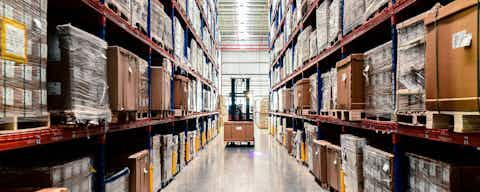- Blog
Four features of supply chain resilience in a post-COVID world

I recently took part in an engaging roundtable discussion with 12 supply chain leaders from the high-tech, consumer goods, and life science industries. We tackled a theme on everyone's mind in the aftermath of COVID-19 – supply chain resilience.
Each participant had a unique perspective, leading to wide-ranging and robust conversations. We traded war stories, shared what we'd learned on the front line, and arrived at a consensus on several different issues. Here are some of the insights we shared.
Nothing trumps effectiveness
This was the crucial message from Chris Gaffney, ex-global strategic supply chain vice president at Coca-Cola. In his opinion, process effectiveness trumps efficiency when it comes to supply chain resilience. In other words, results come first. Improving your supply chain to make it sleeker and more responsive is a worthy goal and an ongoing priority. However, he cautioned that in the meantime, it's important to keep your eye on the primary job – ensuring goods get from A to B – and then into the hands of your customers in time to meet their expectations.
Breaking down border barriers
We discussed the supply chain vulnerabilities that the coronavirus pandemic has exposed, with some commenting that the urgent push to secure supplies of essential goods and distribute vaccines to their own citizens first has led to some countries becoming more nationalistic. This stance has exposed fragilities in global supply chains. The group said that COVID, which knows no borders, proved how critical it is to mitigate the risks of unchecked nationalism. We discussed the importance of working with business leaders and governments – today and down the road – to ensure they understand how the world at large benefits from interdependent global supply chains.
The group also stressed the importance of reliance mapping. A detailed and multilevel chart of supply routes and parties can uncover chinks, weaknesses, and risks. This arms companies with the information they need to quickly address these challenges.
Digital and data
We also covered the overall lessons learned from the pandemic, with a view to being ready for the next black swan event. Participants agreed that integrating advanced digital technologies into their end-to-end systems will help supply chain professionals weather the next global crisis. We also concurred that it's vital to engage people across the business by showing them how a well-run supply chain adds value and gives enterprises a competitive edge.
Data was a hot topic. Data delivered to leadership via dashboards is a great development, but this intelligence must be clear, helpful, and actually get into the hands of the people who make supply chain decisions on a day-to-day basis.
Supplier collaboration to secure supply
Some common themes emerged across all industries as we discussed the challenges COVID has posed. Supply chain management was a wild ride during the pandemic, with frequent spikes and falls in demand as the pandemic progressed.
All supply chain leaders have had to reevaluate their supply chains as a result. Now, they're focusing on improving partnerships with a supplier base that has become all-important. To this end, they're pushing for 360-degree visibility across the supply chain and encouraging more collaborative forecasting.
Bottom line, it was a great event. The impact of COVID-19 has been a wake-up call for all industries on the importance of supply chains, with supply chain leaders earning their stripes over the past 18 months.
